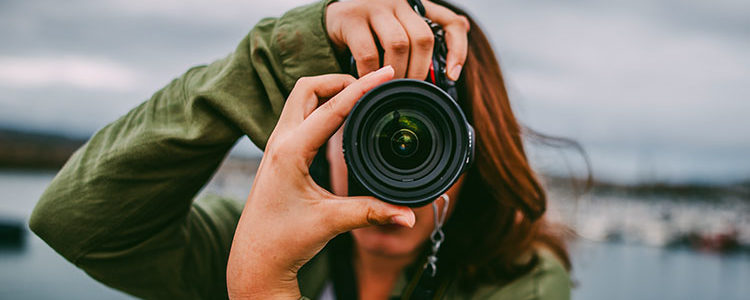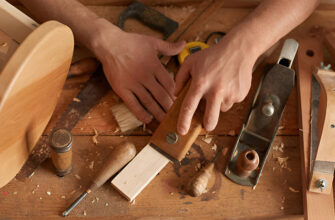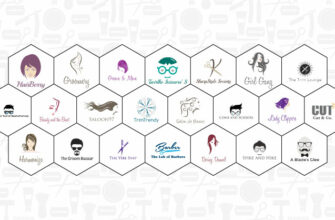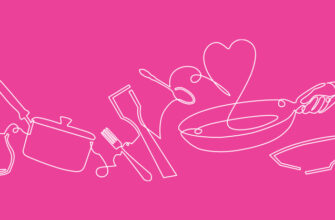We believe that some secrets are too good not to share! That’s the case with these somewhat secretive – hidden – Adobe Lightroom tricks. We’ve produced a list of things you can do with Lightroom that you might not know, particularly if you’re somewhat new to the software. Even if you’ve been using Lightroom, you might find these helpful. Get ready to take some notes or bookmark this page!
The goal of editing software is rather apparent – it’s to edit or enhance your images. You likely also use software to help streamline your work. These tricks help you do both: edit and improve your workflow for the best results possible.
Related: 5 Original Photography Logo Ideas For Creative Shutterbugs
1. Dimming Workspace
If you want all your attention on the image you’re working on; you can press L to dim the rest of the workspace without dimming the image you’re working on. This allows you to focus on the image without the distraction of the rest of the workspace.
2. Solo Mode
If you’re using solo mode and you tend to have several panels open simultaneously, you’re missing out. You might want to try using solo mode. It closes all panels except the one you’re working on. To turn on solo mode, right-click any panel heading and select it from the dropdown menu. That’s it! Now you can focus on one panel at a time but easily open others.
3. Lightroom Presets
Preset for Lightroom is like a template that can be applied to any of your images to improve a style, exposure, blur, contrast, and many other factors based on these settings. If you are looking to get professionally designed Presets for Lightroom, check out these Lightroom Presets that BeArt-Presets created especially for you.
4. Auto Tone
Auto Tone adjusts the exposure, blacks, brightness, and contrast, making it quite handy. In the Library module, you can find it in the Quick Develop panel. Because the adjustments are automatic, you might still want to make some further adjustments. Even so, this feature can save you time.
5. Track Highlights
Suppose you’re concerned that you’re blowing out the highlights in an image when editing color, press the J key in the Develop Module. Blue shows where you’ve lost all your detail in the shadows. Red shows where your highlights are blown out.
6. Adjust Slider Sensitivity
Sliders can be almost too responsive or sensitive. There is a solution for that, though. You can reduce their sensitivity, which is extremely helpful if you’re trying to make very subtle adjustments to an image.
- Take the left side of the panel you’re in and expand it.
- This will also expand the sliders to decrease their sensitivity.
- Note that the next time you open that panel, Lightroom will automatically recall the width you set previously.
Related: Photography Logo Colors: Add Emotion, Drama, And Luxury To Your Design
7. Pinning Filters To Center
Don’t waste time dragging a filter around an image. Instead, click the command key on Mac or control key on Windows and then double-click the pin that appears in the center of the shape or filter. It will pin it to the center of your image!
8. Custom Defaults By Camera
The camera you shoot on can influence the edits you’ll need to make. When you work with various brands, you’ll be treating each camera’s images differently. This trick allows you to easily customize settings applied to pictures based on the camera you used. This is a big timesaver.
- Go to the Develop module.
- Press the alt option key, and an option appears at the bottom right-hand corner.
- Make as many customs presets as you want.
If your camera is low quality or you took a subpar shot, know that you don’t have to delete it. In fact, you can do a few smart image quality enhancements with Picsart’s AI tools to see if your shots can be saved.
9. Reset A Batch
- Preset the alt-option.
- A reset button will appear at the top.
- Press to reset all the sliders to their original positions. You just saved a lot of time.
10. Copy And Paste
This one can save you hours if you’re working with a group of images with similar lighting conditions. You can copy and paste settings you’ve made on one photo across a batch of photos by doing the following:
- In the Library or Develop module, right-click the image with the edits you want to copy to other images.
- Select Develop Settings > Copy Settings. Now you can select which edits you want to copy. (It can be a few or all of them, but there will likely be edits that won’t translate well to other images like spot corrections.)
- Next, select the pictures to which you want to copy the settings.
- Right-click then select Develop Settings > Paste Settings. Voila! You’ve copied over the edits, saving yourself a ton of time!
11. Copy Edits To Next Image
You can copy edits from a previous image to the following one very easily. It’s handy if you open an image and realize that you want to copy the edits you just made on the previous image to the current one. All you have to do is: right-click Develop Settings > Copy from Previous. This pastes the edits you made in the previous image to the current image.
Related: 4 Design Essentials Of A Contemporary Photography Logo Design
12. Virtual Copies
This tip is handy if you’d like to show a client several edited versions of an image without adding the copies to your hard drive and taking up valuable storage. Instead, you can create copies in Lightroom. All you have to do is right-click on the image when you’re in the filmstrip panel and click “Create Virtual Copy.”
13. Identity Plate
If you do photography professionally, this is a good feature if you use Lightroom with clients to go through their images. Identity Plate allows you to add your logo or your business name.
- Go to Lightroom > Identity Plate > Personalized.
- Upload a PNG file with your photography logo design or type in your company’s name.
- If you’re typing in a name, you can select a font.
14. Learn Shortcuts
Lastly, it can be challenging to remember all of the Lightroom keyboard shortcuts. This trick will help you out! You can see a list of shortcuts by pressing the control on Windows or Command on Mac.
Hopefully, you’ll find that these Lightroom tricks and tips will help you improve your workflow, saving you time to do more fun things – like taking more pictures!




